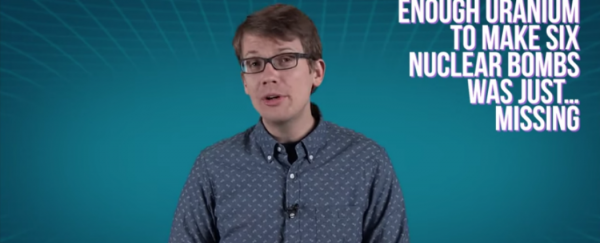
In the latest episode of SciShow, Hank Green takes us back to 1972, when French scientists were doing some routine tests on uranium extracted from the Oklo mine in Gabon in Central Africa. Things didn't go exactly as planned, because the scientists soon realised that they had a lot less uranium than they thought they did. And when we say a lot less, we mean enough to make six whole nuclear bombs, so they kinda needed to figure out where it went, quick-smart.
Uranium that's found in ore comes in three different varieties, or isotopes, and the one capable of vapourising an island when you split it is called uranium-235. No matter where you extract your uranium from, the ore should always contain the same ratios of these three isotopes, and this means each piece of uranium ore is supposed to have exactly 0.72 percent uranium-235. But when the French scientists analysed the ore taken from Oklo, they got a figure of 0.717 percent.
I hear your fake gasps of horror, but that tiny discrepancy becomes huge when spread out over this giant mine. In fact, Hank says in the video above that the team calculated this to mean 200 kilograms of uranium-235 had inexplicably disappeared. Panic, understandably, ensued.
Even stranger than 200 kilograms of uranium-235 disappearing? The fact that the scientists soon realised that they were never going to find it - this uranium had actually been missing for 2 BILLION YEARS.
By analysing the ore taken from Oklo, the French team had unwittingly discovered the remains of an ancient nuclear reactor. And this was one special place. It has all the basic ingredients that modern nuclear reactors have, namely an atom you can split quickly and easily (eg. uranium-235); neutrons to do the splitting; and a way to keep that reaction under control. Because "once the atoms start breaking apart and releasing face-melting amounts of energy, you don't have a nuclear Armageddon on your hands," says Hank.
And just wait till you hear how all these pieces came together so perfectly at the Oklo mine. These facts on their own are, well, pretty face-melting too. In the good way. Watch SciShow above and you'll see what I mean.
Source: SciShow
